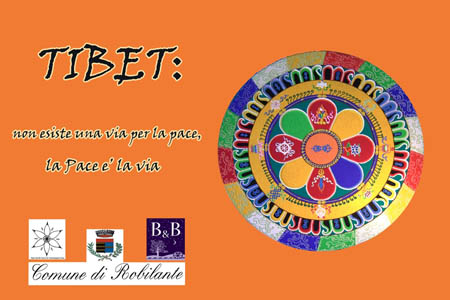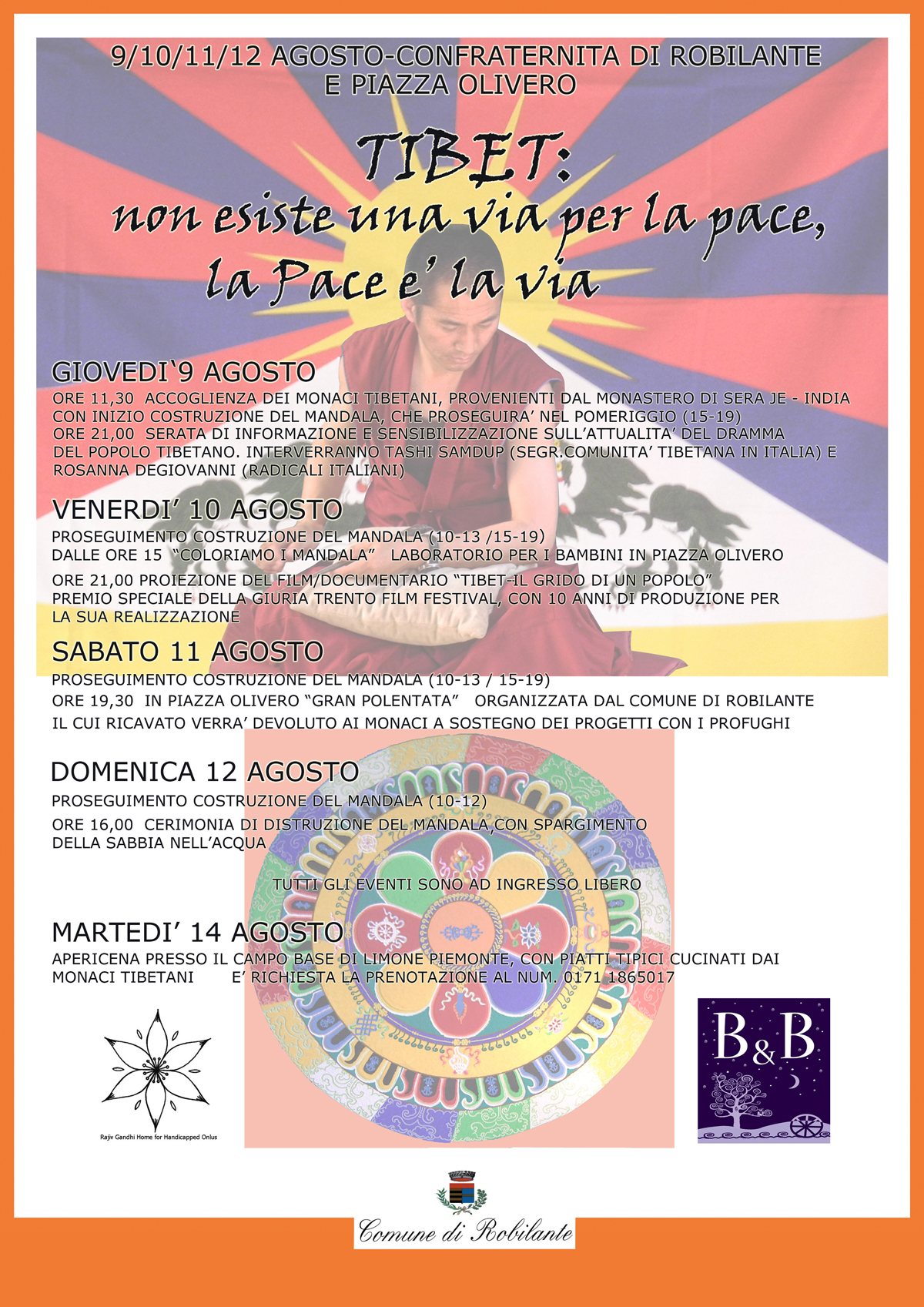09/08/2012. During the summer 2012 The Rajiv Gandhi Home for Handicapped supported an interesting event accommodating a group of Tibetan monks in Robilante. This event was a great success. During their stay in Robilante, they made a sand Mandala and got in touch with people of this tiny village. A good opportunity to sensitize public awareness of Tibet’s tragedy, for a free Tibet against Chinese authorities and their abuses.
Mandala (Sanskrit: मण्डल Maṇḍala, ‘circle’) is a spiritual and ritual symbol in Hinduism and Buddhism representing the Universe. The basic form of most mandalas is a square with four gates containing a circle with a center point. Each gate is in the general shape of a T. The term is of Hindu origin. It appears in the Rig Veda as the name of the sections of the work, but is also used in other Indian religious particularly Buddhism. In various spiritual traditions, mandalas may be employed for focusing attention of aspirants and adepts, as a spiritual teaching tool, for establishing a sacred space, and an aid to meditation and trance induction. In common use, mandala has become a generic term for any plan, chart or geometric pattern that represents the cosmos metaphysically or symbolically; a microcosm of the Universe.



